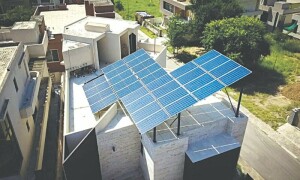KARACHI: Popular drum circles which are organised in major cities of Pakistan often involved a group of well-known, professional musicians playing off each other. This was what one had in mind when attending the ‘Dholi Taro: Community, drums, music and movement’ event held at T2F on Thursday.
Attendance was full and the attendees included people from all ages — from toddlers to senior citizens. There were some people who were enrolled in mindful meditation classes, some had attended ‘therapeutic’ drum circles such as this one before.
The organiser of the event, Ibad, sat close to the centre and spoke about the power of communal music, as well as how drums were used in the olden days for people to express themselves. “Different drums have different sounds,” he says and likens them to the sounds created by the alphabets.
Ibad often conducts similar workshops with the children residing in Machhar Colony and volunteers with Taskeen, a mental health initiative. The objective of this workshop was to encourage physical, emotional and social healing and well-being through communal drum playing. He hopes to conduct this workshop, free of cost, once a month.
But to get a group of people, most of whom do not play an instrument, to come together and make music in harmony is in itself an art and it seems that Ibad has a good command of it. The first lesson he teaches them is about rhythm through clapping. “We have a lot of nerve endings in our hands which get activated when we clap,” says Ibad, “and even if you can’t do a drum circle, you can do a clapping circle.”
“We’re going to use the collective energy of people coming together,” he says after a particularly noisy but nicely synchronised clapping session. “That energy amplifies and then amplifies more,” he adds. He encourages the audience to find rhythm not just by clapping their hands but also by tapping different parts of their body.
Music can be made anywhere and with anything.
A bag was then opened and a variety of instruments were handed out, some were percussion instruments such as small dhols, dufflies and darbukas, others were wind instruments like an assortment of flutes. The audience was informed that all this ‘loot’ was bought from Sunday Bazaar.
Then came the moment of truth: making community music together. Those that did not have an instrument were encouraged to clap. It started off very chaotic, but out of all this chaos erupted some semblance of community music. And it was surprisingly quite pleasing to the ear.
Published in Dawn, May 13th, 2016

















































